Comintern
| Part of the series on |
| Communism |
|---|
 |
|
Concepts
Common ownership
Egalitarianism Classless society Class struggle Proletarian internationalism World revolution |
|
Aspects
Communist state
Communist party Communist revolution Communist symbolism Communism and religion History of communism |
|
Variants
Marxism
Leninism Trotskyism Maoism Left communism Luxemburgism Council communism · Titoism Stalinism Castroism Guevarism Hoxhaism Anarchist communism Religious communism Christian communism Eurocommunism World communism Stateless communism National communism |
|
Internationals
|
|
Related topics
Anarchism · Anti-capitalism
Anti-communism Cold War Communist World Criticisms of communism Democratic centralism Dictatorship of the proletariat Left-wing politics Mass killings under Communist regimes McCarthyism New Class · New Left Perspectives on Capitalism Post-Communism Primitive communism Scientific Communism Scientific socialism Socialism · Socialist economics Soviet Union |

The Communist International (abbreviated as Comintern, also known as the Third International) was an international communist organization founded in Moscow in March 1919. The International intended to fight "by all available means, including armed force, for the overthrow of the international bourgeoisie and for the creation of an international Soviet republic as a transition stage to the complete abolition of the State."[1]
The Comintern was founded after the dissolution of the Second International in 1916, following the 1915 Zimmerwald Conference in which Vladimir Lenin had led the "Zimmerwald Left" against those who supported the "national union" governments in war with each other.
The Comintern held seven World Congresses between 1919 and 1935. It also held thirteen "Enlarged Plenums" of its governing Executive Committee, which had much the same function as the somewhat larger and more grandiose Congresses. The Comintern was officially dissolved in 1943.
Organizational history
Failure of the Second International
While the fissures had been evident for decades, World War I was to prove the issue that finally separated the revolutionary and reformist wings of the workers' movement. The socialist movement had been historically antimilitarist and internationalist, and was therefore opposed to being used as "cannon fodder" for the "bourgeois" governments at war. This especially since the Triple Alliance (1882) comprised two empires, while the Triple Entente gathered the French Third Republic and the United Kingdom of Great Britain and Ireland into an alliance with the Russian Empire. The Communist Manifesto had stated that "the working class has no country" and exclaimed "Proletarians of all countries, unite!" Massive majorities voted in favor of resolutions for the Second International to call upon the international working class to resist war if it was declared.
Nevertheless, within hours of the declaration of war, almost all the socialist parties of the combatant states announced their support for their own countries. The only exceptions were the socialist parties of the Balkans, Russia, and tiny minorities in other countries. To Lenin's surprise, even the German SPD voted in favor of war credits. The assassination of French socialist Jean Jaurès on July 31, 1914, killed the last hope of peace, by removing one of the few leaders who possessed enough influence on the international socialist movement to prevent it from segmenting itself along national lines and supporting governments of National Unity.
Socialist parties of neutral countries for the most part continued to argue for neutrality rather than for total opposition to the war. On the other hand, during the 1915 Zimmerwald Conference, Lenin organized opposition to the "imperialist war" into a movement that became known as the "Zimmerwald Left" and published the pamphlet Socialism and War, in which he called all socialists who collaborated with their national governments "social-chauvinists", that is, socialists in word but chauvinist in deed.
The International was dividing into a revolutionary left and a reformist right, with a center group wavering between those poles. Lenin also condemned much of the center as social-pacifists, because they opposed the war but refused to break party discipline and therefore voted for war credits. The term "social-pacifist" was aimed in particular at Ramsay MacDonald, leader of the Independent Labour Party in Britain, who opposed the war on grounds of pacifism but did not actively resist it.
Discredited by its passivity towards world events, the Second International dissolved in the middle of the war in 1916. In 1917, Lenin published the April Theses, which openly supported a "revolutionary defeatism": the Bolsheviks pronounced themselves in favor of the defeat of Russia which would permit them to move directly to the stage of a revolutionary insurrection.
Impact of the Russian Revolution
The victory of the Russian Communist Party in the Bolshevik Revolution of November 1917 truly shook the world. An alternative path to power to parliamentary politics was demonstrated in broad stokes. With much of Europe on the verge of economic and political collapse in the aftermath of the carnage of the Great War, revolutionary sentiments bubbled forth from a hundred hidden streams. The Russian Bolsheviks, headed by V.I. Lenin, firmly believed that unless socialist revolution swept Europe, they would be crushed by the military might of world capitalism, just as the Paris Commune had been crushed by force of arms in 1871. To this end, the organization of a new international to foment revolution in Europe and around the world became to the Bolsheviks an iron necessity.
Founding Congress
The Comintern was founded in these conditions at a congress held in Moscow March 2-6, 1919,[2] against the backdrop of the Russian Civil War. There were 52 delegates present from 34 parties.[3] They decided to form an Executive Committee with representatives of the most important sections and that other parties joining the International would have their own representatives. The Congress decided that the Executive Committee would elect a five-member bureau to run the daily affairs of the International. However, such a bureau was not formed and Lenin, Trotsky and Christian Rakovsky later delegated the task of managing the International to Grigory Zinoviev as the Chairman of the Executive. Zinoviev was assisted by Angelica Balbanoff, acting as the secretary of the International, Victor L. Kibaltchitch[4] and Vladmir Ossipovich Mazin.[5] Lenin, Trotsky and Alexandra Kollontai presented material. The main topic of discussion was the difference between "bourgeois democracy" and the "dictatorship of the proletariat".[6]
The following parties and movements were invited to the Founding Congress:
.svg.png) Spartacus League (Germany)
Spartacus League (Germany) Russian Communist Party (bolsheviks)
Russian Communist Party (bolsheviks) Communist Party of German Austria
Communist Party of German Austria Hungarian Communist Workers' Party, in power during Béla Kun's
Hungarian Communist Workers' Party, in power during Béla Kun's  Hungarian Soviet Republic
Hungarian Soviet Republic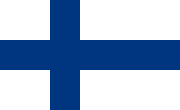 Communist Party of Finland
Communist Party of Finland Communist Party of Poland
Communist Party of Poland Communist Party of Estonia
Communist Party of Estonia Communist Party of Latvia
Communist Party of Latvia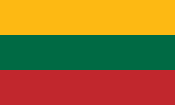 Lithuanian CP
Lithuanian CP.svg.png) Communist Party (bolsheviks) of Byelorussia
Communist Party (bolsheviks) of Byelorussia.svg.png) Communist Party (Bolsheviks) of Ukraine (Ukrainian section of Russian CP, same party basically)
Communist Party (Bolsheviks) of Ukraine (Ukrainian section of Russian CP, same party basically)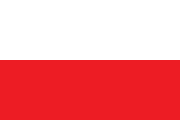 The revolutionary elements of the Czech social democracy
The revolutionary elements of the Czech social democracy Social Democratic and Labour Party of Bulgaria (Tesnyatsi)
Social Democratic and Labour Party of Bulgaria (Tesnyatsi)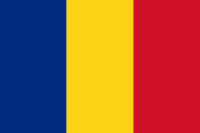 Romanian Social Democratic Party
Romanian Social Democratic Party Left-wing of the Serbian SDP
Left-wing of the Serbian SDP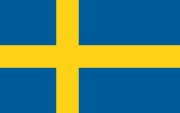 Social Democratic Left Party of Sweden
Social Democratic Left Party of Sweden The Norwegian Labour Party
The Norwegian Labour Party For Denmark, the Klassekampen group
For Denmark, the Klassekampen group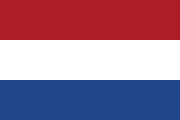 Communist Party of Holland
Communist Party of Holland.svg.png) Revolutionary elements of the Belgian Labour Party (who would create the Communist Party of Belgium in 1921)
Revolutionary elements of the Belgian Labour Party (who would create the Communist Party of Belgium in 1921) Groups and organisations within the French socialist and syndicalist movements
Groups and organisations within the French socialist and syndicalist movements Left wing within the Social Democratic Party of Switzerland
Left wing within the Social Democratic Party of Switzerland.svg.png) Italian Socialist Party
Italian Socialist Party Revolutionary elements of the Spanish Socialist Workers' Party
Revolutionary elements of the Spanish Socialist Workers' Party Revolutionary elements of the Portuguese Socialist Party
Revolutionary elements of the Portuguese Socialist Party British socialist parties (particularly the current represented by John Maclean)
British socialist parties (particularly the current represented by John Maclean) Socialist Labour Party (Great Britain)
Socialist Labour Party (Great Britain) Industrial Workers of the World (Great Britain)
Industrial Workers of the World (Great Britain) Revolutionary elements of the workers' organisations of Ireland
Revolutionary elements of the workers' organisations of Ireland Revolutionary elements among the Shop stewards (Great Britain)
Revolutionary elements among the Shop stewards (Great Britain) Socialist Labor Party of the United States
Socialist Labor Party of the United States Left elements of the Socialist Party of America (the tendency represented by Eugene Debs and the Socialist Propaganda League of America)
Left elements of the Socialist Party of America (the tendency represented by Eugene Debs and the Socialist Propaganda League of America) Industrial Workers of the World (United States)
Industrial Workers of the World (United States) Industrial Workers of the World (Australia)
Industrial Workers of the World (Australia) Workers' International Industrial Union (United States)
Workers' International Industrial Union (United States) The Socialist groups of Tokyo and Yokohama (Japan, represented by Sen Katayama)
The Socialist groups of Tokyo and Yokohama (Japan, represented by Sen Katayama)- Socialist Youth International (represented by Willi Münzenberg)[7]
Of these, the following attended: the Communist Parties of Russia, Germany, German Austria, Hungary, Poland, Finland, Ukraine, Latvia, Lithuania, Byelorussia, Estonia, Armenia, the Volga German region; the Swedish Social Democratic Left Party (the opposition), Balkan Revolutionary People's of Russia; Zimmerwald Left Wing of France; the Czech, Bulgarian, Yugoslav, British, French and Swiss Communist Groups; the Dutch Social-Democratic Group; Socialist Propaganda League and the Socialist Labor Party of America; Socialist Workers' Party of China; Korean Workers' Union, Turkestan, Turkish, Georgian, Azerbaijanian and Persian Sections of the Central Bureau of the Eastern People's, and the Zimmerwald Commission.[3][8]
Grigory Zinoviev served as the first Chairman of the Comintern's Executive Committee from 1919 to 1926, but its dominant figure until his death in January 1924 was Lenin, whose strategy for revolution had been laid out in What Is to Be Done? (1902). The central policy of the Comintern under Lenin's leadership was that Communist parties should be established across the world to aid the international proletarian revolution. The parties also shared his principle of democratic centralism, "freedom of discussion, unity of action", that is, that parties would make decisions democratically, but uphold in a disciplined fashion whatever decision was made.[9] In this period, the Comintern was promoted as the "General Staff of the World Revolution."[10]
Second World Congress
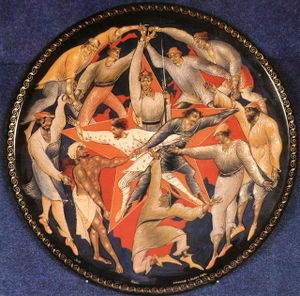
Ahead of the Second Congress of the Communist International, held in July-August 1920, Lenin sent out a number of documents, including his Twenty-one Conditions to all socialist parties. The Congress adopted the 21 conditions as prerequisites for any group wanting to become affiliated to the International. The 21 Conditions called for the demarcation between Communist parties and other socialist groups[11], and instructed the Comintern sections not to trust the legality of the bourgeois states. They also called for the build-up of party organisations along democratic centralist lines, in which the party press and parliamentary factions would be under the direct control of the party leadership.
Regarding the political situation in the colonized world, the second congress of the Communist International stipulated that a united front should be formed between the proletariat, peasantry and national bourgeoisie in the colonial countries. Amongst the twenty-one conditions drafted by Lenin ahead of the congress was the 11th thesis which stipulated that all communist parties must support the bourgeois-democratic liberation movements in the colonies. Notably some of the delegates opposed the idea of alliance with the bourgeoisie, and preferred giving support to communist movements in these countries instead. Their criticism was shared by the Indian revolutionary M.N. Roy, who attended as a delegate of the Communist Party of Mexico. The congress removed the term ‘bourgeois-democratic' in what became the 8th condition.[12]
Many European socialist parties went through splits on the basis of the adhesion or not to the new International. The French Section of the Workers International (SFIO) thus broke away with the 1920 Tours Congress, leading to the creation of the new French Communist Party (initially called "French Section of the Communist International" - SFIC); the Communist Party of Spain was created in 1920, the Communist Party of Italy was created in 1921, the Belgian Communist Party in September 1921, etc.
Third World Congress
Writings from the Third Congress, held in June-July 1921, talked about how the struggle could be transformed into "civil war" when the circumstances were favorable and "openly revolutionary uprisings".[13] The Fourth Congress, November 1922, at which Leon Trotsky played a prominent role, continued in this vein.[14]
During this early period, known as the "First Period" in Comintern history, with the Bolshevik revolution under attack in the Russian Civil War and a wave of revolutions across Europe, the Comintern's priority was exporting the October Revolution. Some Communist Parties had secret military wings. On example is the M-Apparat of the Communist Party of Germany. Its purpose was to prepare for the civil war the Communists believed was impending in Germany, and to liquidate opponents and informers who might have infiltrated the party. There was also a paramilitary organization, the Rotfrontkämpferbund.[15]
The Comintern was involved in the revolutions across Europe in this period, starting with the Hungarian Soviet Republic in 1919. Several hundred agitators and financial aid were sent from the Soviet Union and Lenin was in regular contact with its leader, Béla Kun. Soon an official "Terror Group of the Revolutionary Council of the Government" was formed, unofficially known as "Lenin Boys".[16] The next attempt was the "March Action" in Germany in 1921, including an attempt to dynamite the express train from Halle to Leipzig. After this failed, the Communist Party of Germany expelled its former Chairman, Paul Levi, from the party for publicly criticising the March Action in a pamphlet[17], which was ratified by the ECCI prior to the 3rd congress[18]. A new attempt was made at the time of the Ruhr Crisis in spring and then again in selected parts of Germany in the autumn of 1923. The Red Army was mobilized, ready to come to the aid of the planned insurrection. Resolute action by the German government cancelled the plans, except due to miscommunication in Hamburg, where 200-300 Communists attacked police stations but were quickly defeated.[19] In 1924 there was a failed coup in Estonia by the Estonian Communist Party.[20]
In 1924, the Mongolian People's Revolutionary Party joined Comintern.[21] In China at first both the Chinese Communist Party and the Kuomintang were supported. After the definite break with Chiang Kai-shek in 1927, Stalin sent personal emissaries to help organize revolts which at this time failed.[22]
Fifth to Seventh World Congresses
The Second Period

Lenin died in 1924. 1925 signalled a shift from the immediate activity of world revolution towards a defence of the Soviet state. In that year, Joseph Stalin upheld the thesis of "socialism in one country", detailed by Nikolai Bukharin in his brochure Can We Build Socialism in One Country in the Absence of the Victory of the West-European Proletariat? (April 1925). The position was finalized as the state policy after Stalin's January 1926 article On the Issues of Leninism. The perspective of a world revolution was dismissed after the failures of the Spartacist uprising in Germany and of the Hungarian Soviet Republic, and the reflux of all revolutionary movements in Europe, such as in Italy, where the fascist squadristi broke the strikes and quickly assumed power following the 1922 March on Rome). This period, up to 1928, was known as the "Second Period", mirroring the shift in the USSR from war communism to the New Economic Policy.[23]
At the 5th World Congress of the Comintern in July 1924, Zinoviev condemned Marxist philosopher Georg Lukács's History and Class Consciousness, published in 1923 after his involvement in Béla Kun's Hungarian Soviet Republic, and Karl Korsch's Marxism and Philosophy. Zinoviev himself was dismissed in 1926 after falling out of favor with Stalin, who already held considerable power by this time. Bukharin then led the Comintern for two years, until 1928 when he too fell out with Stalin. Bulgarian Communist leader Georgi Dimitrov headed the Comintern in 1934 and presided until its dissolution.
Geoff Eley summed up the change in attitude at this time as follows:
By the Fifth Comintern Congress in July 1924... the collapse of Communist support in Europe tightened the pressure for conformity. A new policy of "Bolshevization" was adopted, which dragooned the CPs toward stricter bureaucratic centralism. This flattened out the earlier diversity of radicalisms, welding them into a single approved model of Communist organization. Only then did the new parties retreat from broader Left arenas into their own belligerent world, even if many local cultures of broader cooperation persisted. Respect for Bolshevik achievements and defense of the Russian Revolution now transmuted into dependency on Moscow and belief in Soviet infallibility. Depressing cycles of "internal rectification" began, disgracing and expelling successive leaderships, so that by the later 1920s many founding Communists had gone. This process of coordination, in a hard-faced drive for uniformity, was finalized at the next Congress of the Third International in 1928.[24]
The Third Period
In 1928, the 9th Plenum of the Executive Committee began the so-called "Third Period", which was to last until 1935.[25] The Comintern proclaimed that the capitalist system was entering the period of final collapse, and that as such, the correct stance for all Communist parties was that of a highly aggressive, militant, ultra-left line. In particular, the Comintern described all moderate left-wing parties as "social fascists", and urged the Communists devote their energies to the destruction of the moderate left. With the rise of the Nazi movement in Germany after 1930, this stance became somewhat controversial with many such as the Polish Communist historian Isaac Deutscher criticizing the tactics of the Communist Party of Germany of treating the Social Democratic Party of Germany as the principal enemy.
The 6th World Congress also revised the policy of united front in the colonial world. In 1927 the Kuomintang had turned on the Chinese communists, which led to a review of the policy on forming alliances with the national bourgeoisie in the colonial countries. The congress did however make a differentiation between the character of the Chinese Kuomintang on one hand and the Indian Swarajist Party and the Egyptian Wafd Party on the other, considering the latter as an unreliable ally but not a direct enemy. The congress called on the Indian communists to utilize the contradictions between the national bourgeoisie and the British imperialists.[26]
Seventh World Congress and the Popular Front
The seventh and last congress of the Comintern was held between July 25 and August 20 1935. It was attended by representatives of 65 communist parties. The main report was delivered by Dimitrov, other reports were delivered by Palmiro Togliatti, Wilhelm Pieck and Dmitry Manuilsky.[27] The congress officially endorsed the Popular Front against fascism. This policy argued that Communist Parties should seek to form a Popular Front with all parties that opposed fascism and not limit themselves to forming a United Front with those parties based in the working class. There was no significant opposition to this policy within any of the national sections of the Comintern; in France and Spain in particular, it would have momentous consequences with Léon Blum's 1936 election, which led to the Popular Front government.
Stalin's purges of the 1930s affected Comintern activists living in both the USSR and overseas. At Stalin's direction, the Comintern was thoroughly infused with Soviet secret police and foreign intelligence operatives and informers working under Comintern guise. One of its leaders, Mikhail Trilisser, using the pseudonym 'Mikhail Aleksandrovich Moskvin', was in fact chief of the foreign department of the Soviet OGPU (later, the NKVD). At Stalin's orders, 133 out of 492 Comintern staff members became victims of the Great Purge. Several hundred German Communists and antifascists who had either fled from Nazi Germany or were convinced to relocate in the Soviet Union were liquidated, and more than a thousand were handed over to Germany.[28] Fritz Platten died in a labor camp; the leaders of the Indian (Virendranath Chattopadhyaya or Chatto), Korean, Mexican, Iranian and Turkish Communist parties were executed. Out of 11 Mongolian Communist Party leaders, only Khorloogiin Choibalsan survived. A great number of German Communists were handed over to Adolf Hitler. Leopold Trepper recalled these days: "In house, where the party activists of all the countries were living, no-one slept until 3 o'clock in the morning.... Exactly 3 o'clock the car lights began to be seen.... we stayed near the window and waited [to find out], where the car stopped."[29]
Dissolution
At the start of World War II, the Comintern supported a policy of non-intervention, arguing that the war was an imperialist war between various national ruling classes, much like World War I had been (see Ribbentrop-Molotov Pact). But when the Soviet Union itself was invaded on 22 June 1941, the Comintern changed its position to one of active support for the Allies. On May 15, 1943, a declaration of the Executive Committee was sent out to all sections of the International, calling for the dissolution of Comintern. The declaration read:
The historical role of the Communist International, organized in 1919 as a result of the political collapse of the overwhelming majority of the old pre-war workers' parties, consisted in that it preserved the teachings of Marxism from vulgarisation and distortion by opportunist elements of the labor movement.... But long before the war it became increasingly clear that, to the extent that the internal as well as the international situation of individual countries became more complicated, the solution of the problems of the labor movement of each individual country through the medium of some international centre would meet with insuperable obstacles.
Concretely, the declaration asked the member sections to approve:
To dissolve the Communist International as a guiding centre of the international labor movement, releasing sections of the Communist International from the obligations ensuing from the constitution and decisions of the Congresses of the Communist International.
After endorsements of the declaration were received from the member sections, the International was dissolved.[30] Messages between Tito and Dimitrov the Secretary-General in Moscow were intercepted and decrypted by the British GC&CS (Bletchley Park) from 1943, though the volume of messages was not great (the first message from "Walter" [Tito] was intercepted on 21 April, though not decrypted until many months later). They showed the level of control exercised over him (Tito) by Moscow and continued with Dimitrov after June 1943, when the Comintern itself was dissolved.[31]
Usually, it is asserted that the dissolution came about as Stalin wished to calm his World War II Allies (particularly Franklin D. Roosevelt and Winston Churchill) and keep them from suspecting the Soviet Union of pursuing a policy of trying to foment revolution in other countries.[32]
Successor organisations
The International Department of the Central Committee of the Communist Party of the Soviet Union was founded at roughly the same time that the Comintern was abolished in 1943, although its specific duties during the first several years of its existence are unknown.[33]
In September 1947, following the June 1947 Paris Conference on Marshall Aid, Stalin gathered a grouping of key European communist parties and set up the Cominform, or Communist Information Bureau, often seen as a substitute to the Comintern. It was a network made up of the Communist parties of Bulgaria, Czechoslovakia, France, Hungary, Italy, Poland, Romania, the Soviet Union, and Yugoslavia (led by Josip Broz Tito, it was expelled in June 1948). The Cominform was dissolved in 1956, following Stalin's 1953 death and the XXth Congress of the CPSU.
While the Communist parties of the world no longer had a formal international organization, they continued to maintain close relations with each other through a series of international forums. In the period directly after dissolution of Comintern, periodical meetings of Communist parties were held in Moscow. Moreover World Marxist Review, a joint periodical of the Communist parties, played an important role in coordinating the communist movement up to the break-up of the Socialist Bloc in 1989-1991.
Comintern and Communist Party of China
The complicated relationship between the Comintern and the Communist Party of China (CPC) is an important chapter in the history of Comintern.
1921 to 1927
The CPC was established in 1921 with the help of Comintern. The CPC declared itself as a branch of the Comintern. At that time, China had a big revolutionary party called The National Party of China (Kuomintang). Its leader, Dr. Sun Yatsen, frustrated by the refusal of help from western countries, quickly turned to the Soviet Union and Comintern. Under the instruction of the Comintern, the CPC joined the Kuomintang. Kuomintang applied for membership in Comintern, but was not accepted. Sun Yatsen’s successor, Chiang Kai-shek, was once elected as an honorary member of the standing committee in Comintern.
1927 to 1935
After the success of the joint revolution of the Kuomintang and CPC, they split. The Kuomintang under Chiang Kai-shek turned into an anti-communist force. The Comintern instructed the Communists to initiate urban riots, but all failed. A group of “native Communists”, such as Mao Zedong, used peasant riots to establish the Soviet Republic of China in remote mountain villages. The Comintern sent a German, Otto Braun, as the military adviser, who became the real highest commander later. Zhou Enlai, once the Comintern's favorite, was the chairman of the military committee of CPC. After being besieged by Chiang Kai-shek’s army, the Chinese Red Army had to escape to try to find a new base - this came to be known as the Long March (1934-1935).
1935 to 1942
During the Long March, the party leadership re-examined its policy in Zunyi (January 1935). Mao Zedong blamed their failure on blindly following the Comintern's instructions. During the heated debate, Zhou Enlai unexpectedly accepted the criticism and sided with Mao. Otto Braun was dismissed from his commanding position.
After they resettled in Yanan, the native Communists, such as Mao and Zhu De, gained power. Those who were loyal to the Comintern, such as a group called 28 Bolsheviks, fell from important positions. Zhou Enlai became an assistant to Mao in political affairs, such as United Front and diplomacy. The Comintern and Soviet Union could no longer control the CPC. The Comintern continued to give advice, but much was ignored.
An exception was the Northeast Anti-Japanese United Army, organized by the Manchuria branch of the CPC in 1932. Geographically separated from the CPC headquarters in Yenan, this guerrilla army did not report directly to the CPC center, but was still led and supported by the Soviet Union under the name of Comintern until it was defeated by Japanese occupation force and fled to the Soviet Union in 1942.
Comintern-sponsored international organizations
Several international organizations were sponsored by the Comintern in this period:
- Red International of Labour Unions (Profintern - formed 1920)
- Red Peasant International (Krestintern - formed 1923)
- International Red Aid (MOPR - formed 1922)
- Communist Youth International (1919-1943)
- Red Sports International (Sportintern)
- International of the Proletarian Freethinkers (1925 - 1933)
- League against Imperialism (formed 1927)
World Congresses and Plenums of Comintern
-
- Delegate figures are VOTING + CONSULTATIVE.[34]
Event Year Held Dates Location Delegates Founding Congress of the Communist International 1919 March 2-6 Moscow 34 + 18 Conference of the Amsterdam Bureau 1920 February 10-11 Amsterdam 16 2nd World Congress of the Comintern 1920 July 19 to Aug. 7 Petrograd & Moscow 167 + ≈53 1st Congress of the Peoples of the East 1920 September 1-8 Baku 3rd World Congress of the Comintern 1921 June 22 to July 12 Moscow 1st Congress of Toilers of the Far East 1922 Jan. 21 to Feb. 2 Moscow & Petrograd 1st Enlarged Plenum of ECCI 1922 Feb. 24 to March 4 Moscow 105 2nd Enlarged Plenum of ECCI 1922 June 7-11 Moscow 41 + 9 4th World Congress of the Comintern 1922 Nov. 5 to Dec. 5 Petrograd & Moscow 340 + 48 3rd Enlarged Plenum of ECCI 1923 June 12-23 Moscow 5th World Congress of the Comintern 1924 June 17 to July 8 Moscow 324 + 82 4th Enlarged Plenum of ECCI 1924 June 12 and July 12-13 Moscow 5th Enlarged Plenum of ECCI 1925 March 21 to April 6 Moscow 6th Enlarged Plenum of ECCI 1926 Feb. 17 to March 15 Moscow 77 + 53 7th Enlarged Plenum of ECCI 1926 Nov. 22 to Dec. 16 Moscow World Congress Against Colonial Oppression and Imperialism 1927 February 10-15 Brussels 152 8th Enlarged Plenum of ECCI 1927 May 18-30 Moscow 9th Enlarged Plenum of ECCI 1928 February 9-25 Moscow 44 + 48 6th World Congress of the Comintern 1928 July 17 to Sept. 1 Moscow 10th Enlarged Plenum of ECCI 1929 July 3-19 Moscow 36 + 72 2nd Congress of the League Against Imperialism 1929 July Frankfurt Enlarged Presidium of ECCI 1930 February 25-?? Moscow 1st International Conference of Negro Workers 1930 July 7-8 Hamburg 17 + 3 11th Enlarged Plenum of ECCI 1931 March 26 to April 11 Moscow 12th Enlarged Plenum of ECCI 1932 Aug. 27 to Sept. 15 Moscow 38 + 136 13th Enlarged Plenum of ECCI 1933 Nov. 28 to Dec. 12 Moscow 7th World Congress of the Comintern 1935 July 25 to Aug. 21 Moscow
- Delegate figures are VOTING + CONSULTATIVE.[34]
See also
- Executive Committee of the Communist International
- Communist University of the Toilers of the East
- Communist University of the National Minorities of the West
- Moscow Sun Yat-sen University
- Anti-Comintern Pact
- Spanish Civil War
- International Working Union of Socialist Parties ("2 and a half International" founded by Austro-Marxists)
- International Revolutionary Marxist Centre
- Communist Workers International
- International Communist Opposition
Lists:
- List of delegates of the 1st Comintern congress
- List of delegates of the 2nd Comintern congress
- List of left-wing internationals
- List of Communist Parties
- List of members of the Comintern
Internationals:
- First International
- Second International
- Fourth International
- Fifth International
Footnotes
- ↑ MI5 History, The Inter-War Period
- ↑ Berg, Nils J. I kamp för Socialismen - Kortfattad framställning av det svenska kommunistiska partiets historia 1917-1981. It opened with a tribute to Karl Liebknecht and Rosa Luxemburg, recently murdered by the Freikorps during the Spartakus Uprising. Stockholm: Arbetarkultur, 1982. p. 19.
- ↑ 3.0 3.1 Marxist Internet Archive
- ↑ Kibaltchitch would later take the name 'Victor Serge'. A former anarchist, he was not even a member of the RCP(b) at the time. He believed he was included because of his knowledge of European languages. See: Serge, Victor. Memoirs of a Revolutionary
- ↑ [http://www.marxists.org/history/international/comintern/1st-congress/organisation.htm First Congress of the Communist International
- ↑ Marxist Internet Archive
- ↑ First Congress of the Communist International
- ↑ Delegates with deciding votes were: Hugo Eberlein (Communist Party of Germany), Lenin (Russian Communist Party (bolsheviks)), Leon Trotsky (RCP(b)), Zinoviev (RCP(b)), Joseph Stalin (RCP(b)), Bukharin (RCP(b)), Georgy Chicherin (RCP(b)), Karl Steinhardt (Communist Party of German Austria) K. Petin (CPGA), Endre Rudnyanszky (Communist Party of Hungary), Otto Grimlund (Social Democratic Left Party of Sweden), Emil Stang (Norwegian Labour Party), Fritz Platten (the opposition within the Swiss Social Democratic Party), Boris Reinstein (Socialist Labor Party of America), Christian Rakovsky (Balkan Revolutionary Social Democratic Federation), Jozef Unszlicht (Communist Party of Poland), Yrjö Sirola (Communist Party of Finland), Kullervo Manner (CPF), O. V. Kuusinen (CPF), Jukka Rahja (CPF), Eino Rahja (CPF), Mykola Skrypnyk (Communist Party (Bolshevik) of Ukraine), Serafima Gopner (CPU), Karl Gailis (Communist Party of Latvia), Kazimir Gedris (Communist Party of Lithuania and Belorussia), Hans Pöögelman (Communist Party of Estonia), Gurgen Haikuni (Communist Party of Armenia), Gustav Klinger (Communist Party of the German Colonists in Russia), Gaziz Yalymov (United Group of the Eastern Peoples of Russia), Hussein Bekentayev (UGEPR), Mahomet Altimirov (UGEPR), Burhan Mansurov (UGEPR), Kasim Kasimov (UGEPR) and Henri Guilbeaux (Zimmerwald Left of France). Delegates with consultative votes were: N. Osinsky (RCP(b)), V. V. Vorovsky (RCP(b)), Jaroslav Handlir (Czech Communist Group), Stojan Dyorov (Bulgarian Communist Group), Ilija Milkić (Yugoslav Communist Group), Joseph Fineberg (British Communist Group), Jacques Sadoul (French Communist Group), S. J. Rutgers (Dutch Social Democratic Party/Socialist Propaganda League of America), Leonie Kascher (Swiss Communist Group), Liu Shaozhou (Chinese Socialist Workers Party), Zhang Yongkui (CSWP), Kain (Korean Workers League), Angelica Balabanoff (Zimmerwald Committee) and the following delegates representing the sections the Central Bureau of Eastern Peoples: Gaziz Yalymov (Turkestan), Mustafa Suphi (Turkey), Tengiz Zhgenti (Georgian), Mir Jafar Baghirov (Azerbaijan) and Mirza Davud Huseynov (Persia). Source:[1]
- ↑ Lenin, V. (1906), Report on the Unity Congress of the R.S.D.L.P.
- ↑ William Henry Chamberlin Soviet Russia: A Living Record and a History 1929, chapter 11; Max Shachtman "For the Fourth International!" New International, Vol.1 No.1, July 1934; Walter Kendall "Lenin and the Myth of World Revolution", Revolutionary History)
- ↑ For example, the thirteenth condition stated that "The communist parties of those countries in which the communists can carry out their work legally must from time to time undertake purges (re-registration) of the membership of their party organisations in order to cleanse the party systematically of the petty-bourgeois elements within it. The term "purge" has taken on very negative connotations, because of the Great Purge of the 1930s. In the early 1920s, however, the term was more ambiguous. See J. Arch Getty Origins of the Great Purges: The Soviet Communist Party Reconsidered, 1933-1938 p.41 for discussion of the ambiguities in the term, including its use in the 1920 Comintern resolution.
- ↑ M.V.S. Koteswara Rao. Communist Parties and United Front - Experience in Kerala and West Bengal. Hyderabad: Prajasakti Book House, 2003. p. 48, 84-85
- ↑ The Black Book of Communism pp. 275-6; Minutes of the Seventh Session
- ↑ Marxist Internet Archive
- ↑ The Black Book of Communism pp. 282; Marxist Internet Archive
- ↑ The Black Book of Communism pp. 272-5
- ↑ Broue, P. (2006) The German Revolution: 1917-1923, Chicago: Haymarket Books, pg.516
- ↑ Broue, P. (2006) The German Revolution: 1917-1923, Chicago: Haymarket Books, pg.531
- ↑ The Black Book of Communism pp. 277-8
- ↑ The Black Book of Communism pp. 278-9
- ↑ [2]
- ↑ The Black Book of Communism pp. 280-82
- ↑ Duncan Hallas The Comintern, chapter 5
- ↑ Geoff Eley, Forging Democracy: The History of the Left in Europe, 1850-2000 (Oxford University Press US, 2002: ISBN 0-19-504479-7), p. 228.
- ↑ Duncan Hallas The Comintern, chapter 6; Nicholas N. Kozlov, Eric D. Weitz "Reflections on the Origins of the 'Third Period': Bukharin, the Comintern, and the Political Economy of Weimar Germany" Journal of Contemporary History, Vol. 24, No. 3 (Jul., 1989), pp. 387-410 JSTOR
- ↑ M.V.S. Koteswara Rao. Communist Parties and United Front - Experience in Kerala and West Bengal. Hyderabad: Prajasakti Book House, 2003. p. 47-48
- ↑ Institute of Marxism-Leninism of the CPCz CC, Institute of Marxism-Leninism of the CPS CC. An Outline of the History of the CPCz. Prague: Orbis Press Agency, 1980. p. 160
- ↑ The Black Book of Communism p. 298-301.
- ↑ Radzinski, Stalin, 1997
- ↑ Dissolution of the Communist International
- ↑ Mihailović or Tito? How the Codebreakers Helped Churchill Choose by John Cripps; Chapter 13 (pages 237-263) of Action This Day edited by Michael Smith & Ralph Erskine (2001, Bantam London) ISBN 0593 049101 p. 242, 253, 257
- ↑ Robert Service, Stalin. A biography. (Macmillan - London, 2004), pp 444-445
- ↑ Mark Kramer, The Role of the CPSU International Department in Soviet Foreign Relations and National Security Policy, Soviet Studies, Vol. 42, No. 3 (Jul., 1990), pp. 429-446
- ↑ Marxist History: "The Communist International (1919-1943)", accessed March 22, 2010
Further reading
- William J. Chase. Enemies within the Gates?: The Comintern and the Stalinist Repression, 1934-1939. Yale University Press, 2001. ISBN 0300082428
- C. L. R. James, World Revolution 1917-1936: The Rise and Fall of the Communist International Humanities Press, New Jersey, (Revolutionary Series), 1993, ISBN 1-57392-583-7
- Marcel Liebman, Leninism Under Lenin Humanities Press, New Jersey ISBN 0-85036-261-X
- Piero Melograni, Lenin and the Myth of World Revolution: Ideology and Reasons of State 1917-1920, Humanities Press, New Jersey, 1990
- The Comintern and its Critics (Special issue of Revolutionary History Volume 8, no 1, Summer 2001)
External links
- Lenin's speech: The Third, Communist International (recording)
- Comintern Archives (English)
- Comintern Archives (Russian)
- Article on the Third International from the Encyclopedia Britannica
- Workers' Internationals, at Marxist Internet Archive
- Report from Moscow, 3rd International congress, 1920 by Otto Rühle
- Comintern History Archive Marxists Internet Archive
- The Communist International Journal of the Comintern, Marxists Internet Archive